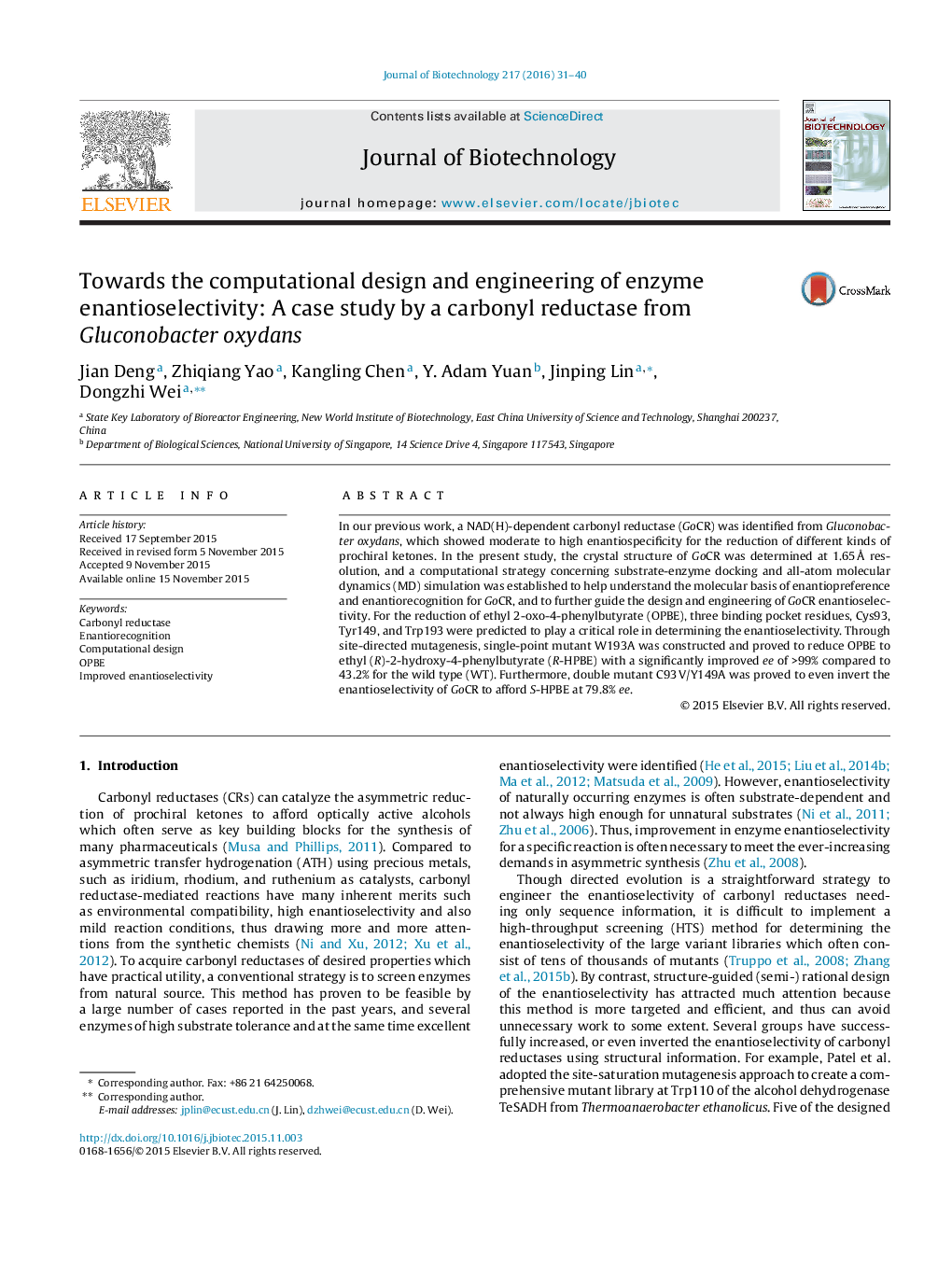| Article ID | Journal | Published Year | Pages | File Type |
|---|---|---|---|---|
| 6490770 | Journal of Biotechnology | 2016 | 10 Pages |
Abstract
In our previous work, a NAD(H)-dependent carbonyl reductase (GoCR) was identified from Gluconobacter oxydans, which showed moderate to high enantiospecificity for the reduction of different kinds of prochiral ketones. In the present study, the crystal structure of GoCR was determined at 1.65Â Ã
resolution, and a computational strategy concerning substrate-enzyme docking and all-atom molecular dynamics (MD) simulation was established to help understand the molecular basis of enantiopreference and enantiorecognition for GoCR, and to further guide the design and engineering of GoCR enantioselectivity. For the reduction of ethyl 2-oxo-4-phenylbutyrate (OPBE), three binding pocket residues, Cys93, Tyr149, and Trp193 were predicted to play a critical role in determining the enantioselectivity. Through site-directed mutagenesis, single-point mutant W193A was constructed and proved to reduce OPBE to ethyl (R)-2-hydroxy-4-phenylbutyrate (R-HPBE) with a significantly improved ee of >99% compared to 43.2% for the wild type (WT). Furthermore, double mutant C93Â V/Y149A was proved to even invert the enantioselectivity of GoCR to afford S-HPBE at 79.8% ee.
Related Topics
Physical Sciences and Engineering
Chemical Engineering
Bioengineering
Authors
Jian Deng, Zhiqiang Yao, Kangling Chen, Y. Adam Yuan, Jinping Lin, Dongzhi Wei,
